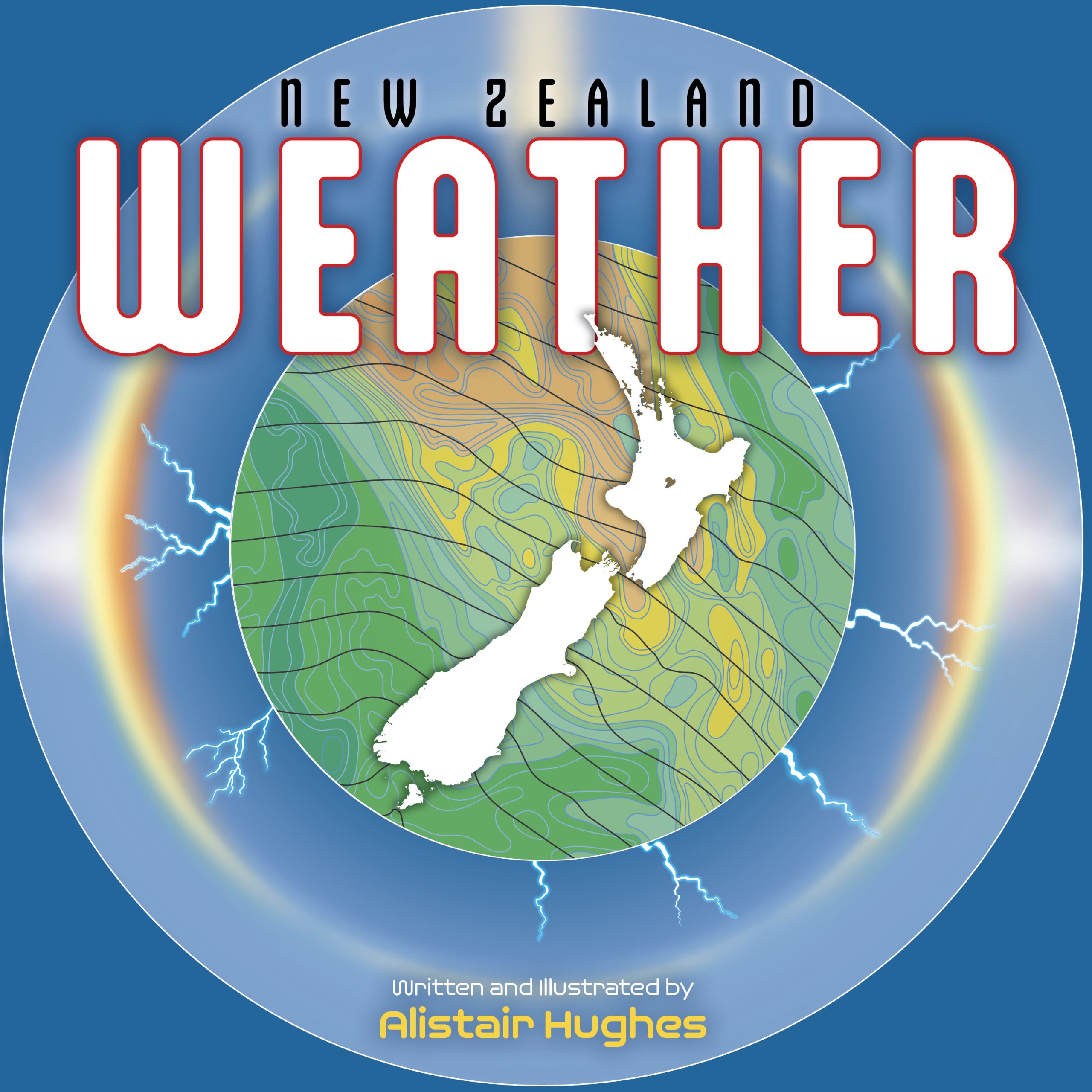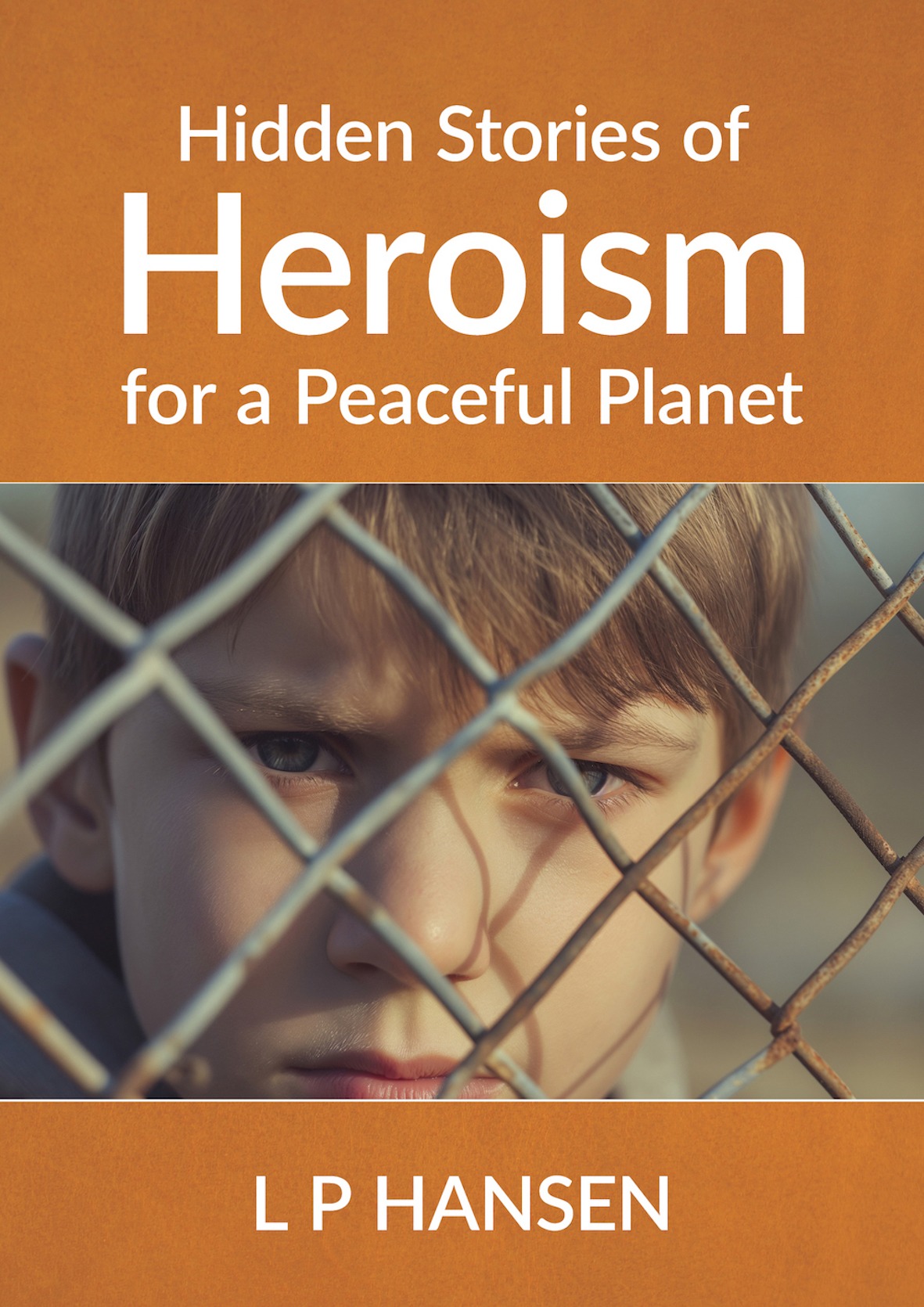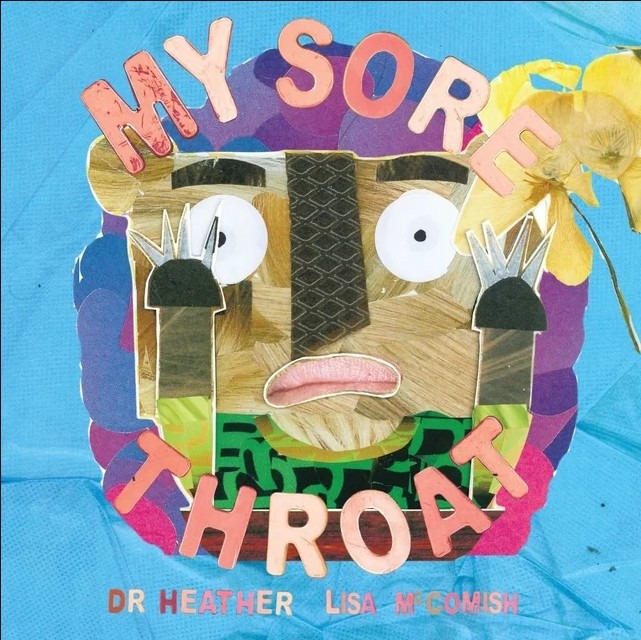Becks Popham and Claudia Palmer review New Zealand Weather, Hidden Stories of Heroism for a Peaceful Planet and My Sore Throat.

I’ll freely admit I had to squash my inner judgemental imp when I received these pukapuka to review. I can tell you, having worked in bookshops for years, we do judge books by their covers. Old habits die hard. However, the imp was fixed with a steely glare, told to pipe down and reminded that just because you aren’t the target audience doesn’t mean you’re not going to get something out of them.
New Zealand Weather, written and illustrated by Alistair Hughes
Alistair Hughes shares his meteorological wisdom and gives us a no nonsense book on the ins and outs of all things weather and Aotearoa’s variable atmospheric conditions.
New Zealand Weather encapsulates a wide range of topics, from how early Polynesian arrivals adapted to their new climate, Māori meteorology to climate change, and wind/solar powered energy sources. Hughes keeps things pretty simple, and it can be a fine line, but he deftly manages to pack the essentials into 40 pages without info dumping. Alistair wrote a brilliant article for The Sapling back in October 2024 discussing the science of writing science and asked the question ‘how can we effectively share science with modern young readers?’. He uses his knowledge incredibly well within these pages—no spread feels too overwhelming and when they are a little more word heavy, the high contrast, chunky typeface makes it easy to read and helps the eyes to navigate the infographics.
… he deftly manages to pack the essentials into 40 pages without info dumping.
The illustrations, done by Alistair himself, are classic textbook style and reminiscent of the early days of Nat Geo Kids. I particularly enjoyed the Māori pūrākau page, featuring drawings depicting the taonga whakairo, carved by Dr Clifford Whiting, of Tāwhirimātea and children, which resides at the MetService headquarters—a great little detail!
This is definitely one for those tamariki whose special interest and/or hyperfixation is meteorology and for those that still revel in the pages of an encyclopedia. I’m reminded of my primary school self (said encyclopedia reader), who got roped in by their science teacher to be part of a weather themed dance number (with expert umbrella twirling choreo) to Travis’ Why Does it Always Rain on Me (awww, the late 90s).
All in all, New Zealand Weather is a solid, simple, accessible science book that would be a grand addition to any primary school bookshelf and I’m happy to add it to mine!

Hidden Stories of Heroism for a Peaceful Planet, by LP Hansen
Hidden Stories of Heroism for a Peaceful Planet is a 112 page chapter book (for an older readership of around 12+ I’d say) about peacemaking and opposition to war. The book starts with 14 vignettes of lesser known people (and peoples), from the Moriori, Parihaka and other Aotearoa activists to Samoa, Poland, Kenya and beyond, who, often to their extreme physical and mental detriment, decided that the non violent fight for peace was the better option.
It took me by surprise how much I enjoyed Hidden Stories of Heroism for a Peaceful Planet. I’ll be honest when I say this one was the one I thought I’d find the hardest to review. I was worried, at first glance, that this would be an overly sentimental read but it isn’t flowery or simpering in the slightest. I ended up spending an evening, completely absorbed, learning all about conscientious objectors, peaceful protesters, selfless actions and ‘those who chose social justice over cruelty and violence’.
… writes concise and easily digestible chapters and does a truly excellent job of giving you enough information to feel like you can form an opinion.
LP Hansen, who has penned many novels for young folks, writes concise and easily digestible chapters and does a truly excellent job of giving you enough information to feel like you can form an opinion. She also bookends each chapter with a list of resources for further solo research and provides great teaching material with timelines and extra facts about the various stories. This does make it look a little text booky and all the graphics are in black and white. It’s a shame the insides weren’t jazzed up a little because at its core, it’s full of admiration for extraordinary people who did incredible things.
It saddens me that this type of book feels very necessary for our rangatahi to safely navigate, with well informed opinions, the world as it is today. There is so much pressure on the youngest generations, so much unasked for responsibility. These days most science books for children, like New Zealand Weather, include pages on climate disasters, extreme weather phenomena and mass extinctions. And here, in Hidden Stories…, the back is dedicated to ‘filling the kete of today’s peacemakers’, with lists of organisations to support, glossaries of war terms and advice on critical thinking. I don’t want to end this review on a bum note, like some doomsday megaphone, so I’ll finish with saying I’m so glad these books are here and available for our tamariki. They’re bolstering and supporting, highlighting and celebrating, informing and feeding all those precious young minds. Becks Popham

My Sore Throat by Dr Heather Brooks and illustrated by Lisa McComish
Small Bear comes home from school feeling unwell. So Dad takes him to the doctor where he’s diagnosed with a severe throat infection, and a swab is sent to the lab. But Small Bear is curious and a little worried about what happens at the lab.
The story covers the symptoms of a sore throat, the process of going to the doctor and what to expect—like how the doctor takes a swab. In the second half, we learn the difference between bacteria and viruses, how antibiotics work and some of the technology used to find all this out like (*breathe in*) the Matrix-Assisted Laser Desorption/Ionisation Time of Flight Mass Spectrometry (*breathe out*). We all know long names and lasers are a sure hit with kids.
It’s always exciting to me to see scientists branch out from disciplines of logic and empiricism and embrace creative science communication. And what better way to do this than through picture books. There’s a secondary message going on in this book too. Mama Bear is evidently a high flying scientist and Dad is an inventor. It’s good to see different career pathways represented in books, especially women in STEM.
Dr Heather has leaned into familiar tools used in children’s books, a rhyme structure and a family of bears, which was a wise move to help make complex concepts like antibiotics and immunity approachable. The inclusion of a glossary, notes for adults and an activity was a great addition to this book. The collage illustrations by Lisa McComish had me nostalgic for Lauren Child’s Clarice Bean series and added a zany flair with plenty of detail and hidden things to look for on each page.
My Sore Throat is the second book from new publishers on the block, Manu Scripts—a project by the Māori and Pasifika Education Trust. I look forward to seeing what they do next. Claudia Palmer

My Sore Throat
Heather Brooks
Illustrated by Lisa McComish
Published by Manu Scripts
RRP $27.00





